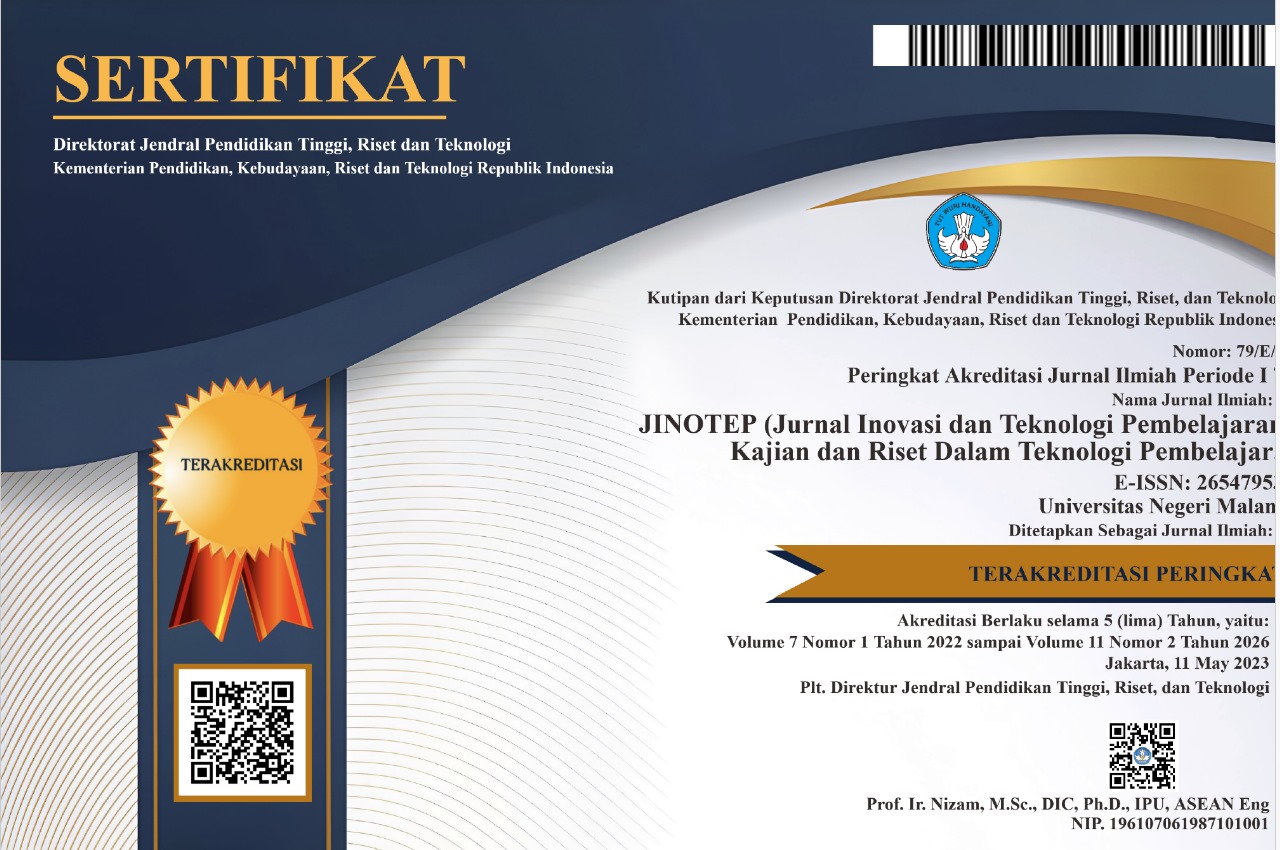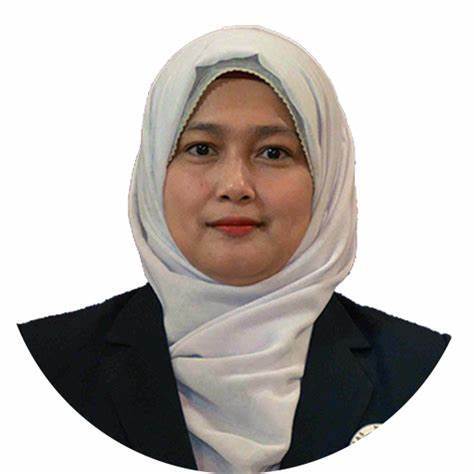The Future of New Learning Way for The Visually Impaired Learners: Use Bionic Eye with Voice Assistant
Abstract
Keywords
Full Text:
PDFReferences
Amato, F., Casillo, M., Colace, F., Santo, M. D., Lombardi, M., & Santaniello, D. (2019). CHAT: A Cultural Heritage Adaptive Tutor. TALE 2019 - 2019 IEEE International Conference on Engineering, Technology and Education. https://doi.org/10.1109/TALE48000.2019.9225962
Amato, Flora, Casillo, M., Colace, F., De Santo, M., Lombardi, M., & Santaniello, D. (2019). CHAT: a Cultural Heritage Adaptive Tutor. 2019 IEEE International Conference on Engineering, Technology and Education (TALE), 1–5. IEEE.
Anantha, R., Chappidi, S., & Dawoodi, W. (2021). Learning to Rank Intents in Voice Assistants. In Lecture Notes in Electrical Engineering (Vol. 704). https://doi.org/10.1007/978-981-15-8395-7_7
Anantha, Raviteja, Chappidi, S., & Dawoodi, W. (2020). Learning to Rank Intents in Voice Assistants. In Conversational Dialogue Systems for the Next Decade (pp. 87–101). Springer.
Anderson, T., Liam, R., Garrison, D. R., & Archer, W. (2001). Assessing teaching presence in a computer conferencing context.
Ayedoun, E., Hayashi, Y., & Seta, K. (2019). L2 learners’ preferences of dialogue agents: A key to achieve adaptive motivational support? International Conference on Artificial Intelligence in Education, 19–23. Springer.
Banerjee, A., Saba, S. B. A., Rana, S., & Chakraborty, S. (2020). Bionic Eye-A Review. 2020 8th International Conference on Reliability, Infocom Technologies and Optimization (Trends and Future Directions)(ICRITO), 501–504. IEEE.
Bert, F., & Summarization, E. (n.d.). Fine-tune BERT for Extractive Summarization.
Boscain, U., Prandi, D., Sacchelli, L., & Turco, G. (2021). A bio-inspired geometric model for sound reconstruction. Journal of Mathematical Neuroscience, 11(1). https://doi.org/10.1186/s13408-020-00099-4
Davies, J. N., Verovko, M., Verovko, O., & Solomakha, I. (2021). Personalization of e-learning process using ai-powered chatbot integration. In Advances in Intelligent Systems and Computing. https://doi.org/10.1007/978-3-030-58124-4_20
Devlin, J., Chang, M.-W., Lee, K., & Toutanova, K. (2018a). Bert: Pre-training of deep bidirectional transformers for language understanding. ArXiv Preprint ArXiv:1810.04805.
Devlin, J., Chang, M. W., Lee, K., & Toutanova, K. (2018b). BERT: Pre-training of deep bidirectional transformers for language understanding. ArXiv, 4171–4186.
Fryer, L. K., Ainley, M., Thompson, A., Gibson, A., & Sherlock, Z. (2017). Stimulating and sustaining interest in a language course: An experimental comparison of Chatbot and Human task partners. Computers in Human Behavior, 75, 461–468.
Garcia Brustenga, G., Fuertes Alpiste, M., & Molas Castells, N. (2018). Briefing paper: los chatbots en educación.
Heller, B., Proctor, M., Mah, D., Jewell, L., & Cheung, B. (2005). Freudbot: An investigation of chatbot technology in distance education. EdMedia+ Innovate Learning, 3913–3918. Association for the Advancement of Computing in Education (AACE).
Lebanoff, L., Song, K., Dernoncourt, F., Kim, D. S., Kim, S., Chang, W., & Liu, F. (2019). Scoring sentence singletons and pairs for abstractive summarization. ArXiv Preprint ArXiv:1906.00077.
Lin, H.-Y., Lo, T.-H., & Chen, B. (2019). Enhanced BERT-based ranking models for spoken document retrieval. 2019 IEEE Automatic Speech Recognition and Understanding Workshop (ASRU), 601–606. IEEE.
Magisetty, R., Hemanth, N. R., Kumar, P., Shukla, A., Shunmugam, R., & Kandasubramanian, B. (2020). Multifunctional conjugated 1, 6-heptadiynes and its derivatives stimulated molecular electronics: Future moletronics. European Polymer Journal, 124, 109467.
Magisetty, R., Kumar, P., Gore, P. M., Ganivada, M., Shukla, A., Kandasubramanian, B., & Shunmugam, R. (2019). Electronic properties of Poly (1, 6-heptadiynes) electrospun fibrous non-woven mat. Materials Chemistry and Physics, 223, 343–352.
McCreery, D. B., Yuen, T. G. H., Agnew, W. F., & Bullara, L. A. (1997). A characterization of the effects on neuronal excitability due to prolonged microstimulation with chronically implanted microelectrodes. IEEE Transactions on Biomedical Engineering, 44(10), 931–939.
Paracchini, M., Marcon, M., Villa, F., Zappa, F., & Tubaro, S. (2020). Biometric Signals Estimation Using Single Photon Camera and Deep Learning. Sensors, 20(21), 6102.
Parashar, K., Prajapati, D., McIntyre, R., & Kandasubramanian, B. (2020). Advancements in biological neural interfaces using conducting polymers: a review. Industrial & Engineering Chemistry Research, 59(21), 9707–9718.
Prajapati, D. G., & Kandasubramanian, B. (2019). Progress in the development of intrinsically conducting polymer composites as biosensors. Macromolecular Chemistry and Physics, 220(10), 1800561.
Qu, C., Qiu, M., & Croft, W. B. (n.d.). BERT with History Answer Embedding for Conversational Question Answering.
Ruan, S., Jiang, L., Xu, J., Tham, B. J.-K., Qiu, Z., Zhu, Y., … Landay, J. A. (2019). Quizbot: A dialogue-based adaptive learning system for factual knowledge. Proceedings of the 2019 CHI Conference on Human Factors in Computing Systems, 1–13.
Schilling, M. A., & Shankar, R. (2019). Strategic management of technological innovation. McGraw-Hill Education.
Srivastava, S., Kalra, S., & Prabhakar, T. V. (2020). Contextual Reactive Pattern on Chatbot building Platforms. Proceedings of the European Conference on Pattern Languages of Programs 2020, 1–8.
Srivastava, S., & Prabhakar, T. V. (2020). Desirable Features of a Chatbot-building Platform. 2020 IEEE International Conference on Humanized Computing and Communication with Artificial Intelligence (HCCAI), 61–64. IEEE.
Tahalyani, J., Rahangdale, K. K., Aepuru, R., Kandasubramanian, B., & Datar, S. (2016). Dielectric investigation of a conducting fibrous nonwoven porous mat fabricated by a one-step facile electrospinning process. RSC Advances, 6(43), 36588–36598.
Torres-Signes, A., & Dip, J. A. (2020). A Bayesian Functional Methodology for Dengue Risk Mapping in Latin America and the Caribbean. Acta Tropica, 105788.
Weber, K., Ritschel, H., Lingenfelser, F., & André, E. (2018). Real-Time Adaptation of a Robotic Joke Teller Based on Human Social Signals. Proceedings of the 17th International Conference on Autonomous Agents and MultiAgent Systems, 2259–2261. International Foundation for Autonomous Agents and Multiagent Systems.
Weng, S.-Y., Lo, T.-H., & Chen, B. (2021). An Effective Contextual Language Modeling Framework for Speech Summarization with Augmented Features. 2020 28th European Signal Processing Conference (EUSIPCO), 316–320. IEEE.
Yamada, M., Goda, Y., Matsukawa, H., Hata, K., & Yasunami, S. (2016). A Computer-Supported Collaborative Learning Design for Quality Interaction. IEEE Multimedia, 23(1), 48–59. https://doi.org/10.1109/MMUL.2015.95
Yamada, Masanori, Goda, Y., Matsukawa, H., Hata, K., & Yasunami, S. (2015). A computer-supported collaborative learning design for quality interaction. IEEE MultiMedia, 23(1), 48–59.
Yang, W., Xie, Y., Lin, A., Li, X., Tan, L., Xiong, K., … Lin, J. (2019). End-to-end open-domain question answering with bertserini. ArXiv Preprint ArXiv:1902.01718.
Yang, W., Zhang, H., & Lin, J. (2019). Simple applications of BERT for ad hoc document retrieval. ArXiv Preprint ArXiv:1903.10972.
Zhang, H., Xu, J., & Wang, J. (2019). Pretraining-based natural language generation for text summarization. ArXiv Preprint ArXiv:1902.09243.
Zhang, Q., He, Y.-J., Zhu, Y.-H., Dai, M.-C., Pan, M.-M., Wu, J.-Q., … Xu, X.-R. (2020). The evaluation of online course of Traditional Chinese Medicine for MBBS international students during the COVID-19 epidemic period. Integrative Medicine Research, 100449.
Zheng, H., & Lapata, M. (2019). Sentence centrality revisited for unsupervised summarization. ArXiv Preprint ArXiv:1906.03508.
DOI: http://dx.doi.org/10.17977/um031v8i12021p068
Refbacks
- There are currently no refbacks.
Copyright (c) 2021 Kao Sheng Che

This work is licensed under a Creative Commons Attribution-ShareAlike 4.0 International License.
======================================================================
Jurnal Inovasi dan Teknologi Pembelajaran published by Universitas Negeri Malang in collaboration with the Asosiasi Program Studi Teknologi Pendidikan Indonesia (APS TPI) and Ikatan Profesi Teknologi Pendidikan Indonesia (IPTPI) with a MoU.
Publisher Address:
Educational Technology Laboratorium, Building D5, 1st Floor
Faculty of Education, Universitas Negeri Malang
Semarang St. No. 5, Malang City, East Java Province, Postal Code 65145
Email: jinotep.fip@um.ac.id
======================================================================

JINOTEP is licensed under a Creative Commons Attribution-ShareAlike 4.0 International License.
JINOTEP Statistics (Since July 13th, 2020)


.png)




.png)
1.png)
1.png)
4.png)
2.png)
1.png)
1.png)
.png)


_3.png)





1.png)
.png)